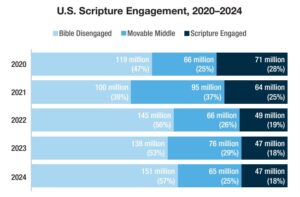
WASHINGTON (BP) — Following pro-life successes with 20-week abortion bans in several state legislatures, the Senate Judiciary Committee reopened debate March 15 on protecting the unborn from late-term abortions nationwide.
“We’re trying to prohibit abortion on demand at 20 weeks,” said Sen. Lindsey Graham, R.-S.C., who introduced the Pain-Capable Unborn Child Protection Act in the Senate last summer.
Republican committee members invited a panel of legal and medical experts to shed light on the facts of late-term abortion, focusing on when babies can experience pain and when they can survive outside the womb. But the committee also invited women with powerful testimonies, including an abortion survivor and a former abortionist.
Melissa Ohden, the survivor of a failed saline infusion abortion in 1977, founded the Abortion Survivors Network and knows more than 200 survivors of failed abortions.
“I should have been delivered dead that day as a successful abortion, a deceased child, but I was born alive,” Ohden told the Senate committee. “A bucket of formaldehyde in a utility closet was meant to be my fate after I wasn’t first scalded to death through the abortion.”
Because Ohden’s abortion attempt occurred in a hospital and not an abortion center, medical staff provided the care she needed to survive. Two nurses at the hospital found out Ohden was born alive and fought to get her needed emergency care, instead of allowing her to die.
Retired gynecologist and former abortionist Kathi Aultman resonated with Ohden’s story. Aultman performed many abortions for women in their second trimester. Afterward, she had to examine the tissue to account for all the body parts — making sure nothing remained in the woman that could cause an infection. Each time, it became harder to separate the perfectly formed organs, which were no different from those of a newborn baby.
“I reasoned that although the need for abortion was unfortunate, it was the lesser of two evils and I was doing something for the wellbeing of women,” Aultman said. “But few doctors are able to do abortions for very long. Physicians are taught to heal, not harm.”
Since the 1973 Roe v. Wade decision, most abortion limits in America are based on fetal viability — the stage of fetal development when a baby is able to live outside the womb. But new advances in technology continue to blur the viability line as babies are able to survive being born at earlier stages of gestation. And new evidence of unborn babies experiencing pain at 20 weeks or sooner continues to mount.
The Pain-Capable Unborn Child Protection Act seeks to use evidence for fetal pain to set a national 20-week abortion threshold. But it does allow for exemptions when the mother’s life is in danger or in cases of rape or incest.
Last week, South Dakota Gov. Dennis Daugaard approved a 20-week abortion ban, making his state the 13th to pass similar legislation since 2010.
The House passed a federal 20-week abortion ban in 2013 and again in 2015, but Democrats blocked the Senate legislation from receiving a vote. Although 54 senators, including three Democrats, voted to end debate and bring the bill to the floor, it needed 60 votes for a final hearing.
But abortion supporters seem to fear the federal 20-week ban has traction. Dozens of women showed up to the hearing wearing pink Planned Parenthood T-shirts. Before allowing them to enter, security officers informed the women not to bring in their signs and to refrain from outbursts during the hearing.
“It is amazing how radical the other side has become on this issue,” said Marilyn Musgrave, vice president of government affairs for the Susan B. Anthony List. “But we want to continue the pro-life momentum by showing the science and giving factual information.”
Musgrave said Tuesday’s hearing on late-term abortions is significant for its timing amid a contentious election season.
“Just a few years ago we would not have something like this in the United States Senate,” she said. “Now we have senators who are comfortable championing this issue while the American voter is paying close attention.”












